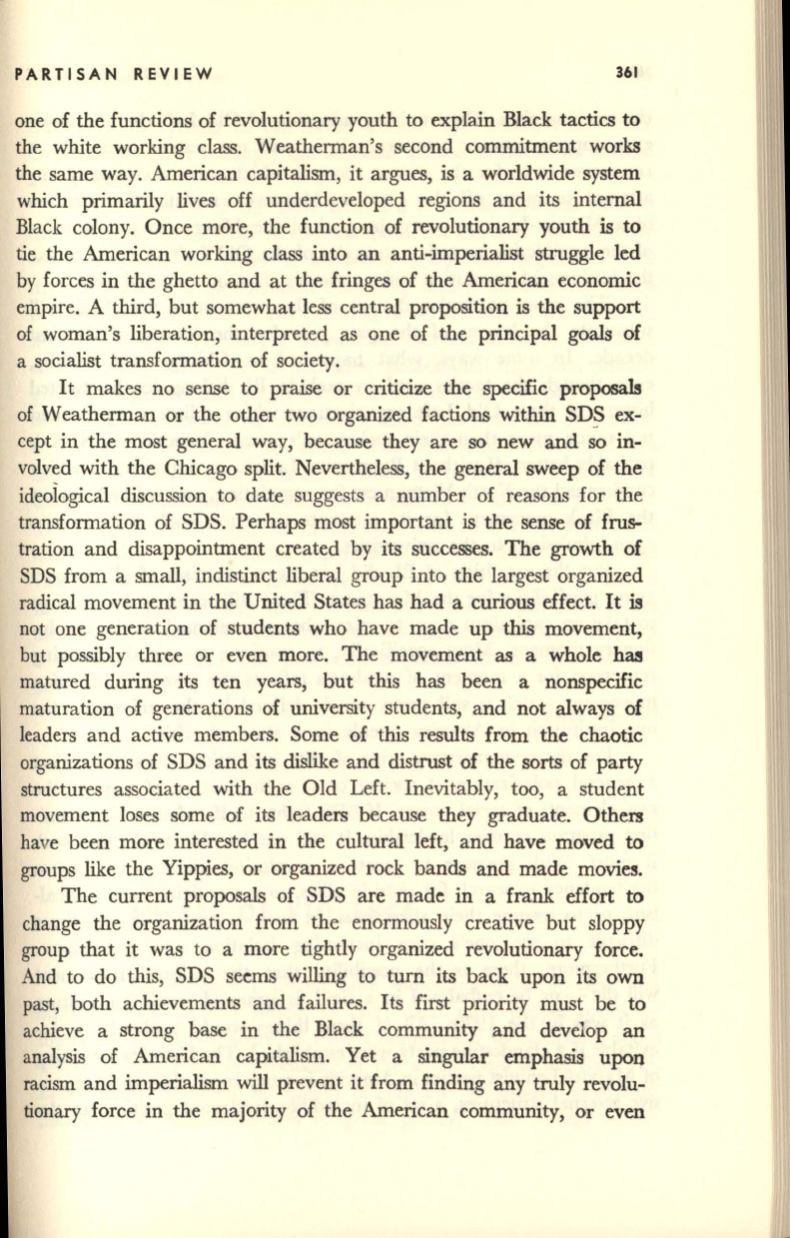
PARTISAN REVIEW
361
one of the functions of revolutionary youth to explain Black tactics to
the white working class. Weatherman's second commitment works
the same way. American capitalism, it argues, is a worldwide system
which primarily lives off underdeveloped regions and its internal
Black colony. Once more, the function of revolutionary youth is to
tie the American working class into an anti-imperialist struggle led
by forces in the ghetto and at the fringes of the American economic
empire. A third, but somewhat less central proposition is the support
of woman's liberation, interpreted as one of the principal goals of
a socialist transformation of society.
It makes no sense to praise or criticize the specific proposals
of Weatherman or the other two organized factions within
SD~
ex–
cept in the most general way, because they are so new and so in–
volved with the Chicago split. Nevertheless, the general sweep of the
ideological discussion to date suggests a number of reasons for the
transformation of SDS. Perhaps most important is the sense of frus–
tration and disappointment created by its successes. The growth of
SDS from a small, indistinct liberal group into the largest organized
radical movement in the United States has had a curious effect. It
is
not one generation of students who have made up
this
movement,
but possibly three or even more. The movement as a whole has
matured during its ten years, but this has been a nonspecific
maturation of generations of university students, and not always of
leaders and active members. Some of this results from the chaotic
organizations of SDS and its dislike and distrust of the sorts of party
structures associated with the Old Left. Inevitably, too, a student
movement loses some of its leaders because they graduate. Others
have been more interested in the cultural left, and have moved
to
groups like the Yippies, or organized rock bands and made movies.
The current proposals of SDS are made in a frank effort to
change the organization from the enormously creative but sloppy
group that it was to a more tightly organized revolutionary force.
And to do this, SDS seems willing to tum its back upon its own
past, both achievements and failures. Its first priority must be to
achieve a strong base in the Black community and develop an
analysis of American capitalism. Yet a singular emphasis upon
racism and imperialism
will
prevent it from finding any truly revolu–
tionary force in the majority of the American community, or even


